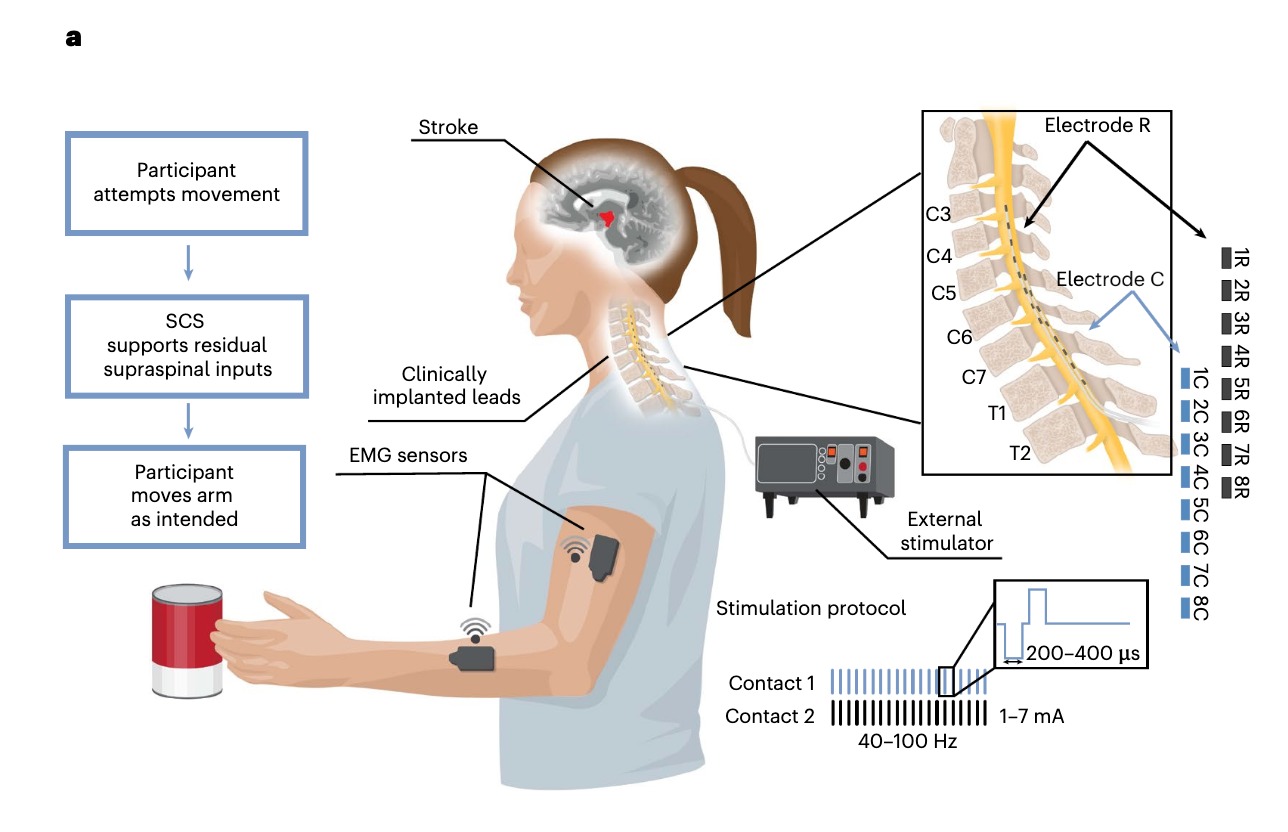Published on
Updated
Reading 3 mins.
A new neurostimulation device could almost instantly restore the motor skills of some people who have suffered a stroke. Hope for thousands of patients.
Recover the use of his hand or arm following a stroke, mission impossible? Not for certain American researchers who have just perfected an intelligent solution – consisting of the establishment of a system of “electrical stimulation” in the spinal cord of patients. The results of this work are available in the journal NatureMedicine.
Electrodes implanted in the neck
The surgical implant, intended to stimulate the spinal cord, was tested in a patient, Heather Rendulic, who suffered from a stroke 9 years earlier.
Strokes disrupt the blood supply to the brain and lead to brain cell death. This often leaves those who survive with long-term health issues. People may retain the desire and intention to move, but the instructions from the brain become so weak that nothing happens.
Aged just over 20, Heather was diagnosed with a cluster of abnormal blood vessels in her brain – a cavernous angioma, which caused a massive stroke. One morning, she woke up unable to move the left side of her body. Over the next nine years, she learned to walk again, but control of her left arm and hand never recovered (she couldn’t put on shoes or cut a piece of meat off her plate. ).

The young woman volunteered to test this new technology. The technology uses a set of thin metal electrodes implanted on the surface of the spinal cord. Electrical impulses from the device stimulate neural circuits in the spinal cord, preparing them to receive movement signals from the brain. This engages muscles that have been weakened by a stroke, allowing patients to voluntarily raise their arm, open and close their fist, and grasp household objects.
Result ? The stimulation worked from day one for the patient, who was able to open and close her hand for the first time in nine years. Continuous stimulation targeting the cervical sensory nerve roots of the spinal cord immediately improved arm and hand strength, range of motion, and function.
The stimulation also allowed participants to perform complex tasks requiring more skill and dexterity, such as using eating utensils and opening a lock, activities they hadn’t done in years.
“No one expected it to work so fast“, said Dr. Marco Capogrosso, of the University of Pittsburgh.
Although this breakthrough has a limited duration – the device was designed to last only one month, after which the electrodes are removed – the results nevertheless remain very promising with Heather Rendulic and a second patient, who was also able to move again. Surprisingly, some benefits persisted for several weeks after device removal.
Combined with physiotherapy or occupational therapy, this stimulation-assisted approach could lead to more robust long-term improvements in motor function.
However, we will have to wait for other work on the subject to define the conditions of access to the device.
“Research is still in its early stages and surgical implants may not be right for everyone. Non-invasive stimulation methods are also being tested and could be used by a wider range of people“, concludes Dr. Rubina Ahmed of the Stroke Association.
